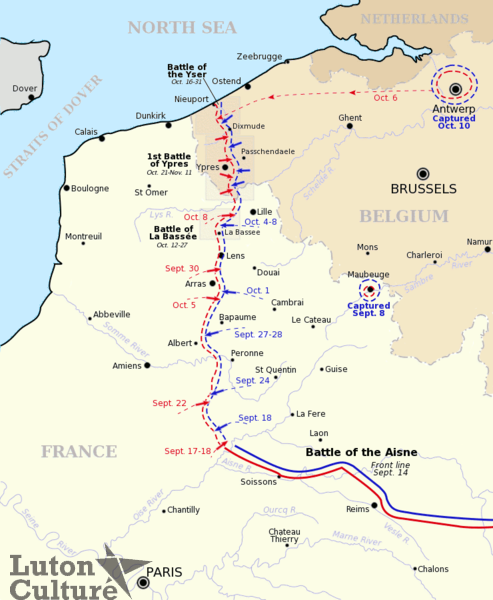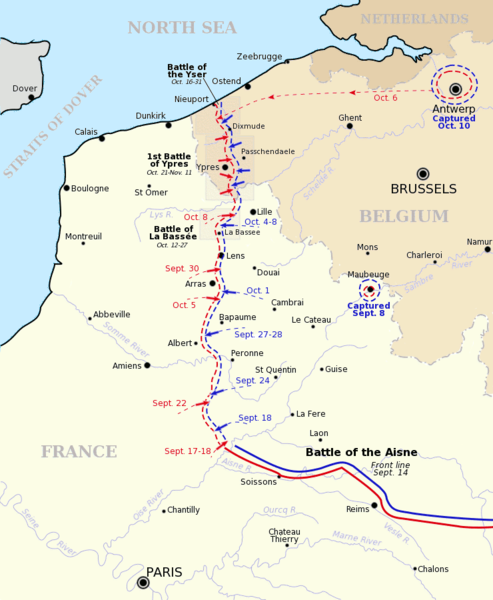First Battle of the Aisne
Event date
Classifications
Source
Source Date

The First Battle of the Aisne (French: 1re Bataille de l'Aisne) was the Allied follow-up offensive against the right wing of the German First Army (led by Alexander von Kluck) and the Second Army (led by Karl von Bülow) as they retreated after the First Battle of the Marne earlier in September 1914. The offensive began on the evening of 13 September, after a hasty pursuit of the Germans.
|
|||||||
| Belligerents | |||||||
|---|---|---|---|---|---|---|---|
 United Kingdom United Kingdom France France |
 German Empire German Empire |
||||||
| Commanders and leaders | |||||||
 John French John French Louis Franchet d'Esperey Louis Franchet d'Esperey Michel-Joseph Maunoury Michel-Joseph Maunoury Joseph Joffre Joseph Joffre |
 Alexander von Kluck Alexander von Kluck Karl von Bülow Karl von Bülow Josias von Heeringen Josias von Heeringen |
||||||
| Strength | |||||||
| Two French armies and the BEF | Three German armies | ||||||
| Casualties and losses | |||||||
 13,541 killed or wounded 13,541 killed or wounded Unknown Unknown |
Unknown | ||||||
Battle
When the Germans turned to face the pursuing Allies on 13 September, they held one of the most formidable positions on the Western Front. Between Compiègne and Berry-au-Bac, the Aisne River winds westward and is about one hundred feet wide, ranging from twelve to fifteen feet deep. Low-lying ground extends a mile on each side, rising abruptly to a line of steep cliffs three to four hundred feet high, then gently leveling to a plateau. The Germans settled on the higher northern side two miles (3 km) beyond the crest, behind a dense thicket that covered the front and slope.
Low crops in the unfenced countryside offered no natural concealment to the Allies. Deep, narrow paths cut into the escarpment at right angles, exposed any infiltrators to extreme hazard. The forces on the northern plateau commanded a wide field of fire.
In dense fog on the night of 13 September, most of the British Expeditionary Force (BEF) crossed the Aisne on pontoons or partially demolished bridges, landing at Bourg-et-Comin on the right and at Venizel on the left. At Chivres east of Venizel, there was an escarpment the Germans had selected as their strongest position. The French Fifth Army crossed the Aisne at Berry-au-Bac and captured the eastern tip of Chemin des Dames, a steep ridge named after the royal coach road Louis XV had built for his daughters. Contact was established along the entire front. East of Chemin des Dames, the French Fourth, Fifth and Ninth armies made only negligible progress beyond the positions they had reached on 13 September.
Under the thick cover of the foggy night, the BEF advanced up the narrow paths to the plateau. When the mist evaporated under a bright morning sun, they were mercilessly raked by fire from the flank. Those caught in the valley without the fog's protective shroud fared no better.
Event Place
Author: David



Add comment